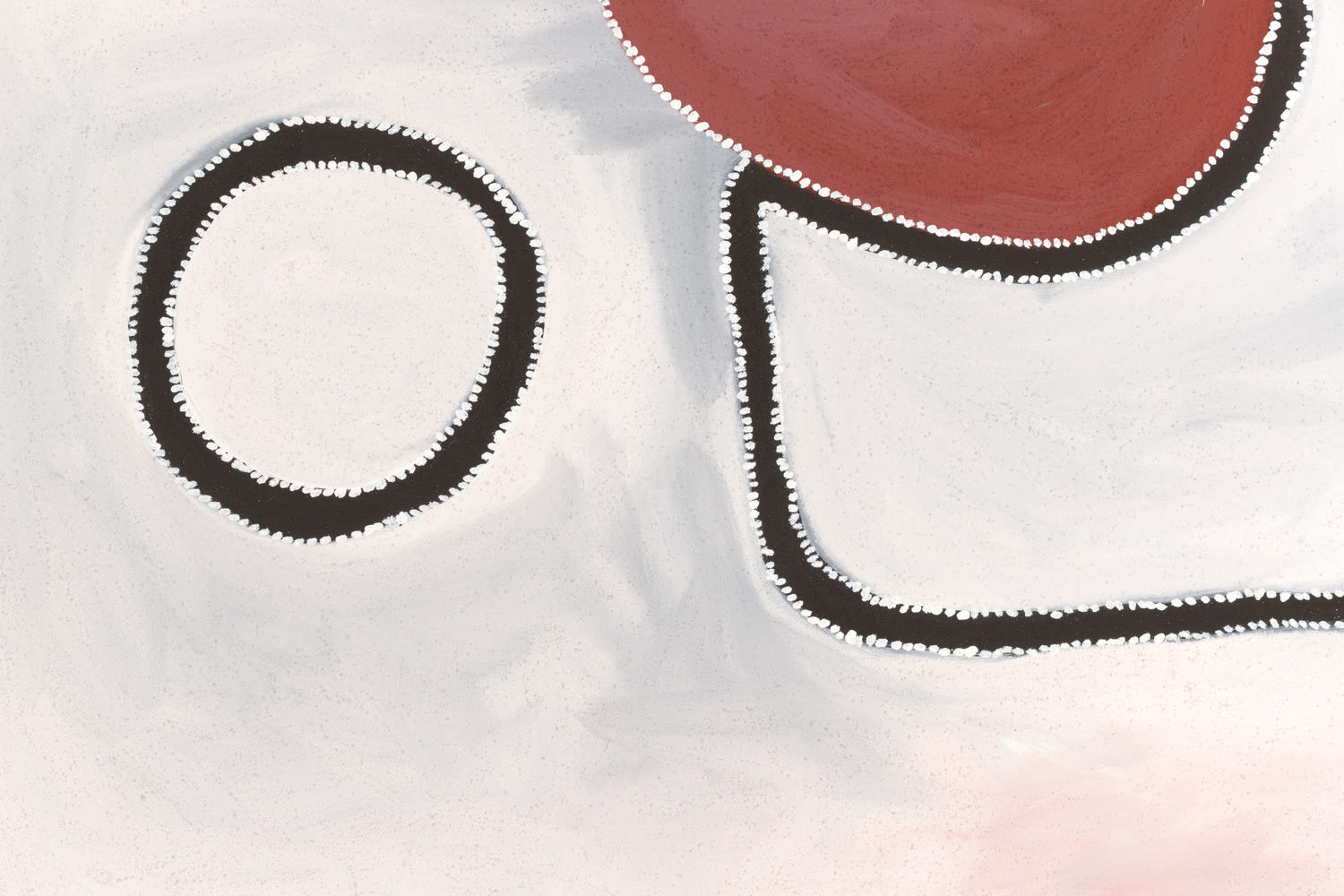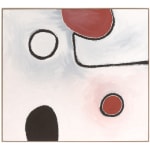
(detail) Paddy Bedford, Twenty Mile, 2005
Photo: Courtesy of D’Lan Contemporary

Paddy Bedford, Twenty Mile, 2005
Photo: Courtesy of D’Lan Contemporary
Paddy Bedford Gija language group, circa 1922-2007
Further images
Provenance
The Artist, painted in the Kimberley Region, Northern Territory
Jirrawun Arts, Western Australia, cat. no. PB 5 2005.221
William Mora Galleries, Melbourne
Paddy Bedford Trust, The Estate of Paddy Bedford
D'lan Contemporary, Melbourne
Collection of Steve Martin & Anne Stringfield, New York
Exhibitions
Paddy Bedford — Bury My Heart at Bow River, William Mora Galleries, Melbourne, 12 February - 20 March 2009
Reverence, D'Lan Contemporary, Oxford Street, Paddington, 6 - 28 September 2019
Significant: 10th Anniversary, D'Lan Contemporary, Melbourne; Sydney; New York, 7 May – 3 July 2025
Literature
Linda Michael (ed.), Paddy Bedford, Museum of Contemporary Art, Sydney, 2006, p. 157 (illus.)
Russell Storer, Paddy Bedford, Museum of Contemporary Art, Sydney, 2007, p. 157, (illus.)
Paddy Bedford — Bury My Heart at Bow River, William Mora Galleries, Melbourne, 2009, p. 29 (illus.)
Vanessa Merlino, Reverence, D'Lan Contemporary, Oxford Street, Paddington, 6-28 September 2019, p. 31 (illus.)
Vanessa Merlino, Luke Scholes, and Isabella Wadley, Significant: 10th Anniversary, D'Lan Contemporary, Melbourne, p. 120-121 (illus.)
Garnkoorlbany – Jack Flood 2000 is a site in Bedford’s father’s Country associated with a wattle
tree (Acacia pellita) that is an integral aspect of a fishing method used in the area. Small branches of this tree, covered in tiny seed pods, are swished through the water, creating a soap-like effect. The fish rise, gasping for air, and can be easily caught. The black areas of the composition represent the abundance of these hunting grounds rather than signifying mourning or death as this colour traditionally suggests in Western art and culture. While drawing on his ancestral past, Bedford’s paintings do not serve as direct invocations of the Ngarranggarni (the Dreaming in Gija language). Instead, the Ngarranggarni represents the living narrative that guides his hand to paint without hesitation, infusing power into his abstract forms and, in turn, renewing the present. In the painting Twenty Mile 2005, Bedford evokes the black soil country Girlingmanji of his mother’s land where both a river and a road run through it. Unlike the previous painting, Garnkoorlbany – Jack Flood, Twenty Mile – which is associated with the death of his grandfather – the site is depicted through the luminosity and transparency of Bedford’s paint. This technique became characteristic of his works created after 2004, likely due to Bedford’s consistent use of gouache as a fluid and spontaneous practice alongside his larger canvases. (Text by Vanessa Merlino, Head of Research, D’Lan Contemporary)



